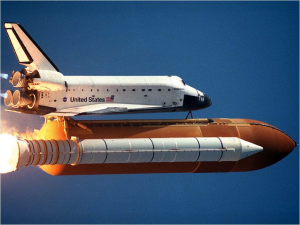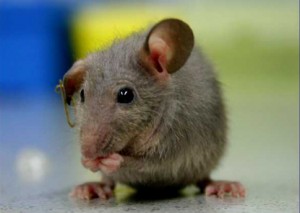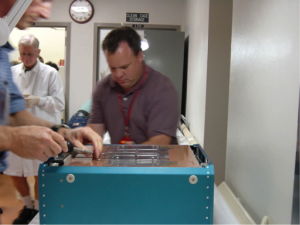Orbiting mice may hold key to slowing bone deterioration
Thirty furry, four-legged “astronauts” today touched down after 13 days orbiting in space to help advance the treatment of osteoporosis.
 A mischief of mice secured a spot on the last flight of NASA’s Space Shuttle Atlantis, as part of a collaborative experiment by researchers from the University of North Carolina and North Carolina State University Joint Department of Biomedical Engineering.
A mischief of mice secured a spot on the last flight of NASA’s Space Shuttle Atlantis, as part of a collaborative experiment by researchers from the University of North Carolina and North Carolina State University Joint Department of Biomedical Engineering.
The team – led by Ted Bateman, PhD, associate professor in the department – prepared the experiment which aims to reveal strategies to protect future astronauts from bone loss during extended exposure to micro-gravity and may offer a potential treatment for Earth-based osteoporosis.
Dr Bateman said Atlantis’ final lift-off on July 8 was a milestone in space exploration history, as well as a big step forward in investigating bone and muscle health in microgravity.
It’s anticipated the flight’s smallest passengers, 30 mice, will one day help humans travel far beyond the moon. Rapid bone loss results from removing gravitational loading. Dr Bateman said such exposure will be unavoidable for interplanetary missions such as round-trips to Mars.
 “Comprehensive work has been done to identify the amount of [bone] loss – about one-to-two per cent per month, which is approximately five times the rate that postmenopausal women lose bone here on Earth,” Dr Bateman said.
“Comprehensive work has been done to identify the amount of [bone] loss – about one-to-two per cent per month, which is approximately five times the rate that postmenopausal women lose bone here on Earth,” Dr Bateman said.
The study will explore how weightlessness in space affects mouse bone tissue at the molecular level, studying the changes in protein expression by load-sensing bone cells called osteocytes. Osteocytes are the bone cells primarily responsible for communicating changes in forces and loads to other cells that affect bone mass and strength. Normally, these cells send a signal in the form of a protein called sclerostin to control bone formation.
“Though it has never been tested, we expect that during spaceflight, with the removal of gravitational loading, sclerostin levels will increase significantly,” Dr Bateman said. “We believe this increase in sclerostin signal may be a primary reason why bone formation is reduced in astronauts and mice when they are in microgravity.”
In this experiment, half of the space-flown mice will be treated with a novel agent that blocks the activity of sclerostin. This experimental agent, a sclerostin antibody, has been shown to increase bone formation and bone mineral density in ground-based mouse studies.

Dr Ted Bateman removing mice from the animal habitat from a similar experiment in 2001. Source: University of North Carolina
Dr Bateman said the medication “may offer a potential treatment for Earth-based osteoporosis as a novel way to increase bone formation and prevent fractures.”
Researchers will now analyze the skeletons of the mice for changes in bone strength and bone mineral density, in addition to looking for alterations in bone cell activity and in the biochemical communications used by these cells.
